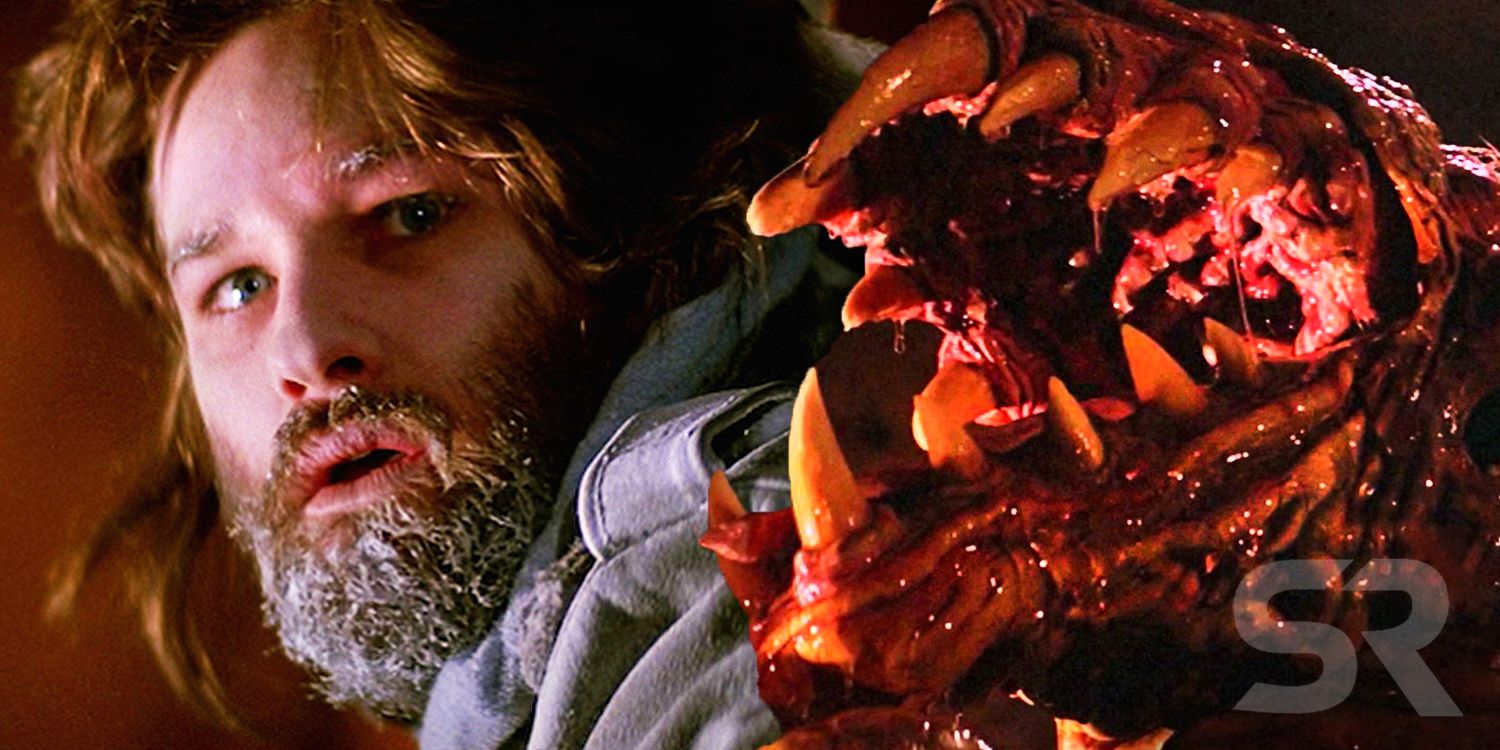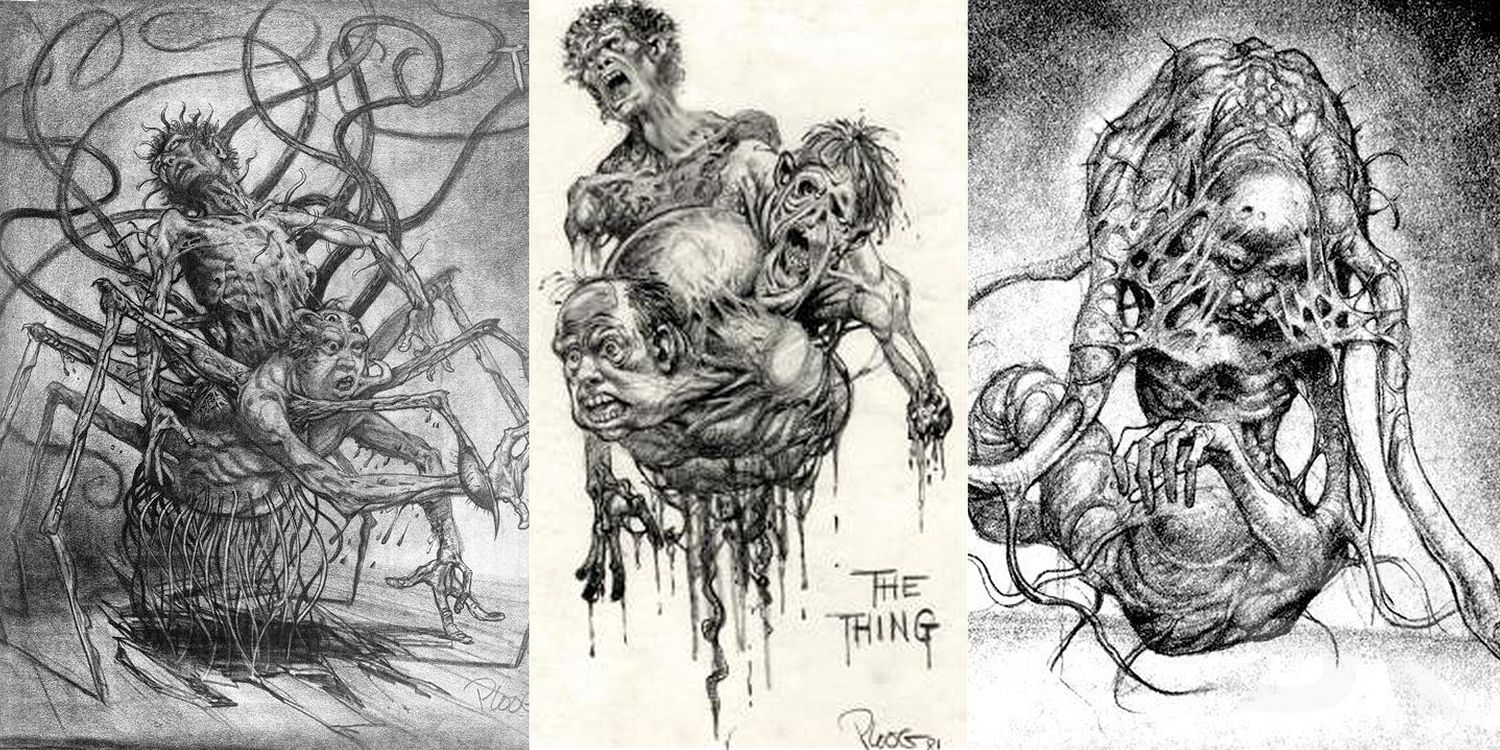The titular shape-shifting parasite in John Carpenter's The Thing is one of the most elaborate monsters in horror movie history, but it could have been even more complex. The 1982 movie is the most famous and most faithful adaptation of John W. Campbell's 1938 sci-fi horror novella Who Goes There?, managing to have the same level of influence on body horror and science fiction movies that the novella had on literature. Having written and directed the horror thriller The Fog and the sci-fi classic Escape From New York, director John Carpenter collaborated for a third time with Kurt Russell, casting him as R.J. MacReady, a helicopter pilot who gets stranded with a team of researchers in a remote station in Antarctica when an alien being starts murdering them and assimilating their physical features.
The Thing is best known for its eerie open ending — are Childs (Keith David) or MacReady the Thing? — as well as its striking visuals, and Ennio Morricone's suspenseful score. More importantly, the element that has placed The Thing in the horror hall of fame is the realism of its ever-changing monster. Back in 1982, most effects had to be practical. This meant that the crew had to manufacture lots of puppets and animatronic robots. Not only did they have to be terrifyingly realistic, but they also had to be functional. Some of them crawled like crabs and others crept like worms, but all of them had to move in a logical manner. Although the creatures could be easily replicated in today's era with CGI and green screens, they wouldn't achieve the authenticity of Carpenter's classic.
The success of The Thing's animatronic creations was highly fruitful, as the alien monster has inspired a slew of other films such as Slither, The Faculty, and Cloverfield. Besides The Thing's iconic "spider-head", one of the most memorable forms the monster takes in the movie is that of the "Blair-Thing", a gross amalgamation of the biologist Blair (Wilford Brimley) and the station commander M.T. Garry (Donald Moffat). This final form is considerably bigger than the rest. It has a pair of huge jaws attached to the side of Blair's head, one extra arm, multiple tentacles instead of legs, and a protruding "Dog-Thing" coming out of its chest. As much as the creature has become one of the scariest horror movie monsters, storyboard artist Mike Ploog had conceived a far scarier version of the grotesque concoction. Ploog's depiction of the monster had the superior half of Garry's body riding a spider-like version of Blair, who had numerous tentacles coming out of his inflated stomach and, presumably, his rear end.
Other designs by Mike Ploog showed varying models of the organism, including intricate bodies with multiple heads, bulging skeletal remains, huge blisters, and molten chunks of flesh and skin. Earlier in production, Carpenter and his crew considered forms that resembled lizards, werewolves, and octopi. Unfortunately, most of these designs had to be simplified due to the technical limitations of the era. Animatronic puppets couldn't handle all of these features and perform their movements at the same time; the creation of more complex creatures would signify countless more hours on top of the intensive work the crew already had in order to maintain the same look throughout the movie. In the end, The Thing nailed the look of the monster without the need for extra detail, and avoided the 2011 prequel's infamous substitution of practical effects with CGI.
Without a doubt, John Carpenter's The Thing is a landmark for practical effects and horror movies as a whole. The technical limitations of the era worked in favor of the design of the monster because they prevented it from being more convoluted than it should be. This is surely a lesson many recent horror movies have forgotten with the advent of CGI and other accessible visual effect techniques. Hopefully, the next The Thing reboot will follow some of John Carpenter's and Mike Ploog's original ideas.


